The quality of materials plays a very important role in construction. Like others Construction Materials, wood (any lumber) differs in properties and characteristics. These characteristics depend on the type of wood used as the material used. For certain tasks and purposes, appropriate wood species are selected that can perform the tasks assigned to them.
Properties related to wood:
wood density
What is wood density
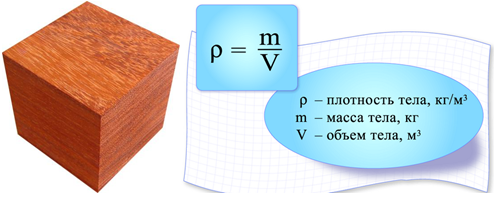
wood density- this is the ratio of the mass of wood to the volume of wood, that is, the density is determined by the mass of wood substance per unit of its volume. Density is expressed in kg/m3.
The density of wood depends on its moisture content. Like all other indicators of the physical and mechanical properties of wood, it is determined at a moisture content of 12%. There is a close relationship between strength and density. Heavier wood tends to be more durable. When determining the density of a wood substance, its mass is determined by weighing, and the volume is calculated from the difference in the volume of the wood sample and the volume of the liquid that filled the voids in this sample.
According to the density of wood at a moisture content of 12%, all species are divided into three groups:
- with a low density (540 kg / m3 and less) - balsa, spruce, fir, pine, cedar, juniper, poplar, aspen, willow, linden, alder, chestnut;
- medium density (540 ... 740 kg / m3) - larch, birch, beech, oak, maple, ash, walnut, mountain ash, apple tree, pear, elm (elm), hazel;
- high density (750 kg / m3 and more +) - acacia, hornbeam, iron birch, oak, ash, boxwood, pistachio.
It should be noted that almost all wood in conifers trees, with the exception of larch and some pine species, has a low density.
wood hardness
The hardness of wood primarily depends on the species. The growth conditions of the tree also affect this indicator (one type of wood may have different hardness depending on the surrounding natural conditions in which a particular tree grew). Also, the amount of hardness is affected by the moisture content of the wood. In European countries and in Russia, it is customary to measure hardness by the Brinell method, in the USA - by the Janka method. The hardness of wood within the same species may differ depending on the cut (At the end surface, the hardness is higher than that of the tangential and radial, on average, by 30% for hardwoods and 40% for softwoods.).
The essence of the Brinell method lies in the ability of wood to resist penetration (indentation) into it more solid body(indenter). Brinell measurements use hardened steel ball indenters. Initially, the indenter is installed on the wood sample to be checked, followed by the main load. After a certain time after the application, the load is removed and the depth of the imprint remaining on the tree is measured. The Brinell hardness of wood is calculated as follows: the applied load is divided by the surface area of the imprint, while the corresponding normative documents the indenter diameters and exposure time were determined.
The Jank method also uses an indenter in the form of a metal ball, however, it is not the depth of indentation that is estimated, but the force that must be applied to press the ball into the wood by half the diameter.
All tree species hardness is divided into three groups:
1) soft rocks(end hardness is equal to or less than 38.5 MPa). Soft wood includes: spruce, pine, cedar, fir, poplar, linden, aspen, alder.
2) hard (face hardness of wood species from 38.5 to 82.6 MPa). This group includes: birch, Siberian larch, beech, maple, elm, ash, apple.
3) very hard (face hardness over 82.6 MPa). This group includes: white acacia, keruing, iron birch, boxwood, dogwood.
Wood moisture
Humidity is the ratio of the mass of moisture (water) present in a given volume of wood to the mass of absolutely dry wood, expressed as a percentage (%). In wood, water permeates the cell membranes and fills the cell cavities and intercellular spaces. Moisture that impregnates cell membranes is called bound. Moisture that fills cell cavities and intercellular spaces is called free moisture.
|
Wet - long time located in the water. The moisture content of wet wood is above 100%. Freshly cut(fresh sawn) - the moisture content of such wood is from 50 to 100%. Air dry- this category includes wood that has been stored in the air for a long time. Its humidity indicators depend on the humidity of the surrounding air, but on average they range from 20 to 35%. Basic(humidity 15-20%) depending on climatic conditions and season, such wood shows a moisture content of 15 to 20%. Room dry humidity 8-12% Absolutely dry humidity 0%, the wood is dried at a temperature of t=103 0 C. |
The moisture content in the trunk of a growing tree varies along the height and radius of the trunk, as well as depending on the season. For example, the moisture content of pine sapwood is 3 times higher than that of the core. At hardwood the change in humidity along the diameter is more uniform. Along the height of the trunk, the moisture content of sapwood in conifers increases up the trunk, while the moisture content of the core does not change. In hardwoods, the moisture content of the sapwood does not change, but the moisture content of the core decreases up the trunk.
Humidity in young trees is higher and its fluctuations during the year are greater than in older trees. The largest number moisture is contained in winter period(November-February), the minimum - in the summer months (July-August).
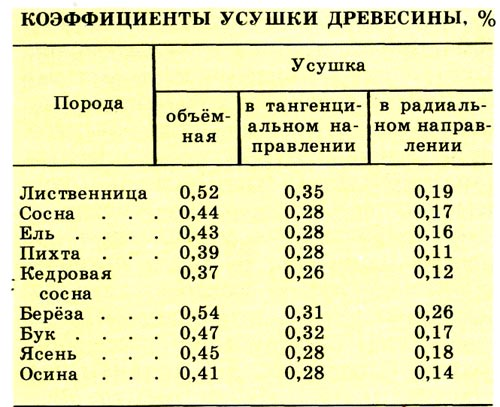
Shrinkage, swelling and warping of wood
Shrinkage- this is a decrease in the volume of wood and linear dimensions when the bound moisture is removed from it. Removal of free moisture does not cause shrinkage. It begins only after the complete removal of free moisture at the time of the beginning of the removal of bound moisture. The more cell walls per unit volume of wood, the more bound water in it and the higher the shrinkage. The shrinkage of wood is not the same in different directions: in the tangential direction it is 1.5 - 2 times more than in the radial direction.
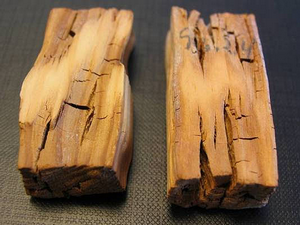 On average, the linear shrinkage of wood of most species in the tangential direction is 8-10%, in the radial direction 3-7%, and along the fibers 0.1-0.3%. The total volumetric shrinkage is in the range of 11-17%. Wood shrinkage is taken into account when sawing logs into boards (shrinkage allowances), when drying lumber, etc.
On average, the linear shrinkage of wood of most species in the tangential direction is 8-10%, in the radial direction 3-7%, and along the fibers 0.1-0.3%. The total volumetric shrinkage is in the range of 11-17%. Wood shrinkage is taken into account when sawing logs into boards (shrinkage allowances), when drying lumber, etc.
When drying in wood, regardless of participation external loads, internal stresses arise. They are formed as a result of unequal changes in the volume of the body during drying (drying stresses), impregnation and in the process of tree growth. It is convenient to represent the total drying stresses as a combination of two components - moisture and residual stresses.
Humidity stresses are caused by non-uniform shrinkage of the material. In the surface layers of wood, where the humidity is lower than in the center, tensile stresses arise due to the constraint of free shrinkage, and compressive stresses occur in the internal ones. Residual stresses are caused by the appearance of inhomogeneous residual deformations in the wood. Residual stresses, unlike moisture stresses, do not disappear when the moisture in the board is equalized and are observed both during drying and after it is completely completed.
If the tensile stresses reach the tensile strength of the wood across the fibers, cracks appear. This is how surface cracks appear at the beginning of drying and internal cracks at the end of drying.
The presence of various stresses inside the wood can lead to warping.
Warping- this is a change in the shape of wood during drying, storage, and sawing. Most often, warping occurs due to varying degrees of shrinkage in different structural directions. Warping can also occur during mechanical processing of dry lumber: with asymmetric planing, rib division due to imbalance of residual stresses.
Swelling- this is an increase in the linear dimensions and volumes of wood with an increase in the content of bound moisture. It occurs when wood is moistened and is the opposite of shrinkage. Swelling is observed with an increase in humidity to the limit of hygroscopicity. The greatest swelling occurs along the width of the fibers (tangentially), the smallest - along the fibers.
Swelling, as well as shrinkage, are negative properties of wood. However, in some cases it plays a positive role, for example, it provides tight connections in boats or wine barrels.
Splitting of wood
Durability and flexibility of wood
wear resistance- this ability of wood is called to resist destruction in the process of friction. The wear of the same wood is greater on the side than on the end. The higher the hardness and density of wood, the less its wear. Wet wood is more prone to wear - that's why for decorative panels or natural floorboards, experts recommend dry cleaning.
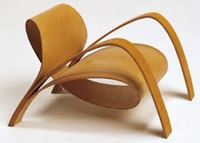 Flexibility is the ability of wood to deform under the influence of external forces. Technologically, the operation of bending (bending) is based on the ability of wood to deform relatively easily when exposed to bending devices, especially when heated and wet. During cooling and drying under load, a significant part of the elastic deformations passes into residual ones, is fixed new form details. Wet wood has a higher bending ability than dry wood.
Flexibility is the ability of wood to deform under the influence of external forces. Technologically, the operation of bending (bending) is based on the ability of wood to deform relatively easily when exposed to bending devices, especially when heated and wet. During cooling and drying under load, a significant part of the elastic deformations passes into residual ones, is fixed new form details. Wet wood has a higher bending ability than dry wood.
Deciduous ring-vascular tree species (oak, ash) and scattered vascular species (beech, birch) have the greatest ability to bend (bend). In conifers, this ability is very low.
The ability to bend is widely used in the manufacture of furniture, interior items.
impact strength- this is the ability of wood to absorb work upon impact (impact bending) without destruction and is determined during bending tests. The impact strength of hardwood is on average 2 times greater than that of softwood.
Thermal properties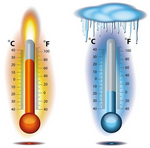
Thermal properties include heat capacity, thermal conductivity, thermal diffusivity and thermal expansion.
Heat capacity is the ability of wood to store heat. It increases with increasing humidity.
Thermal conductivity- property characterizing the intensity of heat transfer in the material. Thermal conductivity increases with increasing humidity and density. Thermal conductivity along the fibers is on average 2 times greater than across.
Thermal conductivity- the ability of wood to equalize the temperature in volume.
thermal expansion- this is the ability of wood to increase the linear dimensions and volume when heated. The coefficient of thermal expansion of wood is 3-10 times less than that of metal, concrete, glass.
 Deformability
Deformability
Under short-term loads, mainly elastic deformations occur in the wood, which disappear after the load. Up to a certain limit, the relationship between stresses and strains is close to linear (Hooke's law). The main indicator of deformability is the coefficient of proportionality - the modulus of elasticity.
The modulus of elasticity along the fibers E = 12-16 GPa, which is 20 times greater than across the fibers. The greater the modulus of elasticity, the more rigid the wood.
With an increase in the content of bound water and the temperature of wood, its rigidity decreases. In loaded wood, during drying or cooling, part of the elastic deformations is converted into "frozen" residual deformations. They disappear when heated or moistened.
Since wood is composed primarily of polymers with long, flexible chain molecules, its deformability depends on the duration of stress. Mechanical properties wood, like other polymers, are studied on the basis of the general science of rheology. This science considers the general laws of deformation of materials under the influence of a load, taking into account the time factor.
Drying wood
Evaporation or steaming has been used in Rus' since ancient times. The blanks from the growths are sawn into pieces, taking into account the dimensions of the future product, they are laid in ordinary cast iron, sawdust from the same blank is sprinkled, poured with water and placed for several hours in a heated and cooling Russian oven to "languish" at a temperature of 60-70 ° C. At the same time, "leaching" occurs - the evaporation of wood, natural juices come out of the workpiece, the wood is painted, acquiring a warm thick chocolate color, with a pronounced texture - a natural pattern. Such a blank is easier to process, and after drying, the wood cracks and warps less.
Waxing. Blanks from growths are lowered into melted paraffin and placed in an oven at a temperature of 40 ° C for several hours. Then the wood dries out for a few more days and acquires the same properties as after steaming: it does not crack, does not warp, the surface becomes tinted with a distinct texture pattern.
Steaming in linseed oil. The method of steaming semi-finished blanks for the manufacture of ladles, spoons and other utensils in linseed oil has been known in Rus' for a long time. Tableware made of wood steamed in linseed oil is very water resistant and does not crack even with everyday use. This method is still acceptable today. The workpiece is placed in the container, poured linseed oil and boiled over low heat.
Humidity (absolute) wood is the ratio of the mass of moisture in given volume wood, to the mass of absolutely dry wood, expressed as a percentage.
Moisture in wood impregnates cell membranes (bound or hygroscopic) and fills cell cavities and intercellular spaces (free or capillary).
When wood dries, first free moisture evaporates from it, and then hygroscopic. When wood is moistened, moisture from the air impregnates only the cell membranes until they are completely saturated. Further moistening of wood with filling of cell cavities and intercellular spaces occurs only with direct contact of wood with water (soaking, steaming). From this it follows that once dried wood, not being in direct contact with water, cannot have a moisture content above the hygroscopic limit - the state of wood in which the cell membranes contain the maximum amount of bound moisture, and only air is in the cell cavities.
The total saturation of wood with water is called hygroscopicity limit
. This stage of humidity, depending on the type of wood, is 25-35%.
Wood obtained after drying at a temperature of 105 degrees with the complete release of all hygroscopic moisture is called absolutely dry wood.
In practice, wood is distinguished: room-dry (with humidity 8-12%), air dry artificial drying (12-18%), atmospheric dry wood (18-23%) and wet (humidity exceeds 23%).
The wood of a tree that has just been felled or has been in water for a long time is called wet, its moisture content is up to 200%. There is also an operational humidity corresponding to the equilibrium moisture content of wood in specific conditions.
Table 2. Average humidity in a freshly cut state, %
shrinkage is called a decrease in the linear dimensions and volume of wood during drying. Drying begins after the complete removal of free moisture and from the beginning of the removal of bound moisture.
Shrinkage in different directions is not the same. On average, complete linear shrinkage in the tangential direction is 6...10%, in the radial direction - 3...5%, and along the fibers - 0.1...0.3%.
The decrease in the volume of wood due to the evaporation of bound moisture is called volumetric shrinkage .
When sawing logs into boards, allowances for shrinkage are provided so that after drying, the lumber and blanks have the specified dimensions.
Table3. Wood shrinkage in %
(from saturated to completely dry)
Type of wood |
Longitudinal |
In the tangential direction |
in the radial direction |
balsa tree |
|||
Beech white |
|||
Forest beech |
|||
Larch |
|||
Pine (common) |
|||
Resinous pine |
|||
Types of moisture and moisture conditions of wood
Wood belongs to hygroscopic materials, i.e. its moisture content depends on the state environment. If a wood sample is placed in a room with a low temperature and a high degree of saturation, then it will begin to absorb moisture from the environment (the process of sorption will occur). If a raw wood sample is placed in a room with room conditions, then moisture will begin to evaporate from it (desorption process). The processes of both sorption and desorption will take place up to a certain limit, at which the moisture content of the wood corresponds to the air surrounding it. In this case, the processes stop, and the moisture content of the wood will be called stable. The maximum amount of moisture received by wood by sorption is called saturation limit moisture and is equal to 30%. The processes of sorption and desorption are mutually inverse.
Equilibrium humidity- such a moisture state of wood, in which the pressure of the environment is in equilibrium with the pressure of the liquid in the surface layers of the wood. At equilibrium humidity, the sorption moisture is equal to the desorption moisture. Equilibrium moisture is found in small assortments, determined by the diagram.
Formulas: Wud=Wp=Wp+1.25(%); Wac=Wp-1.25(%).
Swelling- the process of increasing the linear dimensions and volume of wood with an increase in moisture content in the wood. The processes of shrinkage and swelling are mutually inverse and are associated with the removal and absorption of only bound moisture.
Swelling is a negative property of wood, but in some cases it is beneficial, providing tight joints (in barrels, vats, ships, etc.).
Effect of drying on wood strength
The strength of wood depends mainly on its species, temperature and humidity. When drying, humidity and temperature change, so its strength also does not remain constant. Moisture-related strength changes are reversible, i.e. when dry wood is moistened, its strength decreases, and when dried, strength is restored. An increase in temperature reduces the strength of wood.
Wood moisture meter VIMS-2.10

The VIMS-2.10 device is designed to measure the moisture content of wood and its derivatives in finished goods and lumber.
The main types of controlled materials:
wood: birch, beech, oak, spruce, cedar, linden, larch, alder, walnut, aspen, pine, poplar, ash;
chipboard, veneer, fiberboard, laminate;
The device displays: moisture content of dry or wet base (in %), type of wood, material, number, time and date of measurement. It is produced with a basic setting, however, to increase the accuracy, an additional calibration of the device on samples of controlled wood is recommended.
The device has 2 types of sensors:
built into the device;
external (supplied by special order) for control inside the stack.
There are 3 modes of operation: continuous, scanning with averaging, measurement with memory and delay.
Operating conditions: temperature range 0…+40°С, relative air humidity up to 60%, atmospheric pressure 86…106 kPa.
Humidity measurement range, %: |
|
wood |
|
other materials |
|
Limit of permissible basic absolute error, %: |
|
in the range 1…10% |
|
in the range of 10…20% |
|
in the range 21…45% |
|
not standardized |
|
Nutrition |
2nd batteries size AA |
Overall dimensions of the device, mm |
|
Weight of the device, g |
You can buy a VIMS-2.10 moisture meter
Moisture meter for lumber, Humitest MC-360XLА
Dielectric moisture meter Humi-test MS-360XLA is designed to measure the moisture content of lumber with different densities. Used both indoors and outdoors. Has 14 wood groups with different density, from 100 to 1050 kg/m3 It has graduations for 466 types of wood. Designed for enterprises of the woodworking industry, the production of furniture, lumber, timber.
The device is easy to operate and does not destroy the measured wood surface. There is a correction depending on the density of the measured material.
Functions performed
- automatic averaging of measurement results.
- automatic power off.
- low battery indication.
- automatic introduction of temperature correction.
- Sound signal
Specifications:
You can buy Humitest MC-360XLА humidity meter
Types of drying
The most common types of drying are natural And artificial.
Natural looking drying- atmospheric, air. Natural drying occurs under the influence of atmospheric circulating air, which evaporates moisture from the wood. It is necessary to dry the wood in the shade, under a canopy and in a draft. When dried in the sun, the outer surface of the wood heats up quickly, while the inner remains damp. Due to the difference in stresses, cracks form, the tree quickly warps.
 It is better to choose a place for drying at the attic of the house, a barn or a specially arranged shed-warehouse. At the same time, one should not forget about fire safety measures - do not clutter up the passages and do not overload the storage areas for material stocks.
It is better to choose a place for drying at the attic of the house, a barn or a specially arranged shed-warehouse. At the same time, one should not forget about fire safety measures - do not clutter up the passages and do not overload the storage areas for material stocks.
Boards, timber and other blanks for carving are stacked on metal, wooden or other supports with a height of at least 50 cm. The blanks are laid in rows, shifting them with dry slats (bars) one above the other so that there are air through vertical channels between the blanks - gaps. The boards are laid with the inner layers up to reduce their warping.
To reduce warpage, a stack of lumber harvested from freshly cut and living trees is recommended to be compacted from above with a heavy load.
During natural drying, cracks always form at the ends, therefore, the blanks must be slightly longer than the intended product, since after drying, cracked ends have to be cut down.
To prevent cracking and preserve the material, it is recommended that the ends of the boards and blanks for sculptures be carefully painted over. oil paint or soak several times with hot drying oil or bitumen to protect the pores of the wood.
Trunks (ridges) must be debarked (cleaned of bark), only at the ends they leave small belts-couplings 20-25 cm wide to prevent cracking. The bark is cleaned so that the tree dries out faster and is not affected by carpenter beetles. The trunk, left in the bark, in relative warmth with high humidity, quickly rots, is affected by fungal diseases.
After atmospheric drying in warm dry weather, the wood moisture content is 18%-20%. In the future, you can dry the wood in a heated room to 10% humidity.
Disadvantages of this drying method: the inability to dry the wood to a moisture content below 18-20%. Dependence on weather and climatic conditions.
Advantages: no heat consumption and ease of drying.
Artificial or chamber type of drying- the main method in which the drying of lumber is carried out in drying chambers ah, having the right equipment and appliances. The heat carriers in this method are gases, air, hot water vapor. There are air, gas and superheated steam dryers.
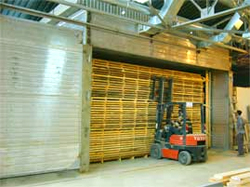 Temperature, humidity and air circulation are controlled in the chambers. Atmospheric drying is used for preliminary drying of lumber and, as a rule, is combined with chamber drying of wood. Sawn timber can be stacked in stacks in piece or batch way. When forming a stack by piece method between rows of boards lay dry (moisture content not more than 18%) calibrated softwood and hardwood strips with a section of 25 x 40 mm and a length equal to the width of the stack.
Temperature, humidity and air circulation are controlled in the chambers. Atmospheric drying is used for preliminary drying of lumber and, as a rule, is combined with chamber drying of wood. Sawn timber can be stacked in stacks in piece or batch way. When forming a stack by piece method between rows of boards lay dry (moisture content not more than 18%) calibrated softwood and hardwood strips with a section of 25 x 40 mm and a length equal to the width of the stack.
Stack height spacers must be laid perpendicular to the boards and strictly vertically one above the other. The stack is formed from boards of the same breed and thickness. Ways of laying lumber in stacks depend on the direction (circulation) of the drying coolant. For drying chambers with countercurrent circulation, lumber is laid at intervals (spaces), and for chambers with transverse reverse and countercurrent rectilinear circulation - tightly.
A modern way of drying wood with an infrared dryer video
Folk drying methods
Evaporation or steaming used in Rus' since ancient times. The blanks from the growths are sawn into pieces, taking into account the dimensions of the future product, they are laid in ordinary cast iron, sawdust from the same blank is sprinkled, poured with water and placed for several hours in a heated and cooling Russian oven to "languish" at a temperature of 60-70 ° C. At the same time, "leaching" occurs - the evaporation of wood, natural juices come out of the workpiece, the wood is painted, acquiring a warm thick chocolate color, with a pronounced texture - a natural pattern. Such a workpiece is easier to process, and after drying it cracks and warps less.
Waxing. Blanks from growths are lowered into melted paraffin and placed in an oven at a temperature of 40 ° C for several hours. Then the wood dries out for a few more days and acquires the same properties as after steaming: it does not crack, does not warp, the surface becomes tinted with a distinct texture pattern.
Steaming in linseed oil. The method of steaming semi-finished blanks for the manufacture of ladles, spoons and other utensils in linseed oil has been known in Rus' for a long time. Tableware made of wood steamed in linseed oil is very water resistant and does not crack even with everyday use. This method is still acceptable today. A blank is placed in a container, poured with linseed oil and boiled over low heat.
Initially, each type of wood has a natural moisture level, which also depends on weather conditions, places where the tree grows, storage features. Moisture is measured as a percentage of moisture to the weight of wood. receive conventional sawing logs. The moisture content can be in the range of 22-100% depending on the environment, storage location and season.
lumber natural humidity not suitable for all construction tasks. This type of material is largely susceptible to rotting and fungal attack. Due to the high humidity, logs quickly become unsuitable for construction. When tightly packed and high temperature it is almost impossible to transport them to long distances- deteriorate in 3-5 days. Lumber of natural moisture are used mainly in low-rise construction, for objects of a low degree of responsibility.
To obtain wood of a given moisture level, drying is used - either atmospheric or forced (using machines). In the first case, moisture is distributed evenly throughout the log, and the material acquires the temperature and humidity of the environment. To transport lumber over long distances, it is necessary to dry them at least to a level of 22%, and preferably lower.
The corresponding procedure is carried out in a chamber using hot air. In this case, all insects, fungi and various microorganisms die. The output is quality dry lumber which is suitable for construction of all kinds wooden structures. Drying significantly increases the protective properties of wood and stabilizes it. physical and mechanical properties. In addition to traditional drying in convection chambers, other methods have now become widespread - they are used vacuum dryers, microwave, condensing and others.
Dry lumber does not change over time appearance(while lumber of natural moisture tends to warp and crack). The gouging quality of a dry board is higher than that of a similar board in natural moisture. It should be borne in mind that during drying, the geometric dimensions in the transverse (tangential) section are significantly reduced. Dry lumber is no longer threatened by fungus (the so-called blue stain), it becomes durable and can be stored for a very long time. Such wood is easily finished, easily processed and glued. It is used for all construction objects made of wood. Of course, dry lumber is much more expensive.
Tree - natural material quite susceptible to moisture. It is able to release and absorb moisture depending on the environmental conditions. With a constant state of the microclimate, the moisture content of wood tends to constant values.
Determining the moisture content of wood largely depends on the type of wood. The most hygroscopic are pear, beech, kempas. The most resistant are oak, bamboo, merbau.
The use of wood for construction and renovation requires compliance with moisture standards. The term "moisture" refers to the percentage of water to dry wood.
Humidity types
There are two types of moisture content of wood raw materials: relative and absolute.
Absolute
This concept is characterized by the ratio of the mass fraction of moisture of a certain volume of wood to the weight of absolutely dry raw materials of the same size. For this indicator, there are established state standards. According to them, the indicators of the absolute humidity meter of the board should be within 9%.
Relative
This is the percentage of moisture that is contained in the tree, to the mass of wet wood. In wood raw materials, water is in two forms: free and bound. They point to total number moisture in raw materials. The volume of bound moisture depends on the microclimate, as it is absorbed from the air. It is located in the cellular structure of the tree. It is because of this, depending on the humidity of the environment, that the material swells or shrinks. Bound water can only be removed by drying.
Free moisture does not lead to swelling, since the water in this case is in the intercellular structure of the wood. But thanks to it, the density of the material increases.
In addition, the type of wood raw material depends on the degree of its moisture content.
There are several types of wood moisture content:
Wet. This category includes a tree that has been exposed to water for a long time. In this case, the moisture meter reading is more than 100%.
Freshly cut. The humidity of a freshly felled tree is in the range of 50-100%.
Room dry. This type of material has been in a heated building for a long time. Therefore, its number is in the range of 9–13%.
Air dry. This type includes wood that has been stored outdoors for a long time. Depending on environmental conditions, its rate is in the range of 15–20%.
Absolutely dry. Such indicators can be achieved only with the help of drying in a special device. The amount of water in this case is 0.
How to find out the moisture content of wood?
There are several methods for determining the moisture content of wood. But first you need to find out the type of plant and the moisture content of the air, since for different trees have their own standards.
In order to measure the moisture content of wood raw materials, as a rule, two methods are used: by weight or by means of electrical appliance. Their performance may differ slightly, but not significantly.
weight
This method will require:
very accurate scales;
Measurement process:
To begin with, from the middle of the board, you need to saw off a piece 10-15 millimeters wide with your own hands. It will serve as a control sample. The main thing at this stage is to take the bar from the center of the board. It is not worth cutting off the end part, since it has much less moisture.
After weighing, this piece must be sent to a special dryer, a device with a temperature of about 100 ° C.
The first weighing is done by hand after five hours. All subsequent indicators are recorded at intervals of 1-2 hours.
Drying is carried out until the weight indicator begins to repeat. This means that the material has become completely dry. Let's denote the numerical indicator of the last sample as "Pc".
W = (Ph-Pc) : (Pc x 100%)
W - indicator in percent; Ph is the first weight; Pc is the last weight.
For more reliable results, it is better to use two sample samples. 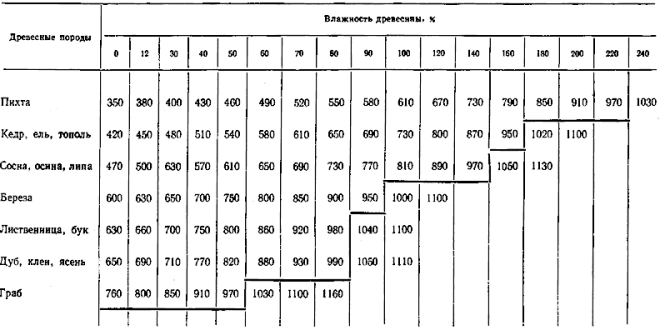
Electric
It takes a very long time to carry out a weight measurement of wood. On average, this work takes about nine hours. But there is a way that allows you to determine the percentage of water in a tree much faster and more accurately.
It is much easier to set the moisture content of wood raw materials using an electric moisture meter.
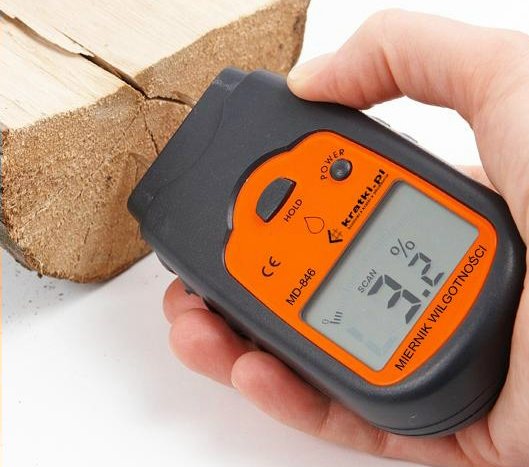
The principle of operation of the moisture meter is based on the change in specific electrical resistance material depending on its moisture content. The needle electrodes of this device are inserted into the wood so that they are opposite each other. A current is started through them, and the moisture meter shows the amount of water in this section of the tree. But since the moisture meter measures moisture only locally, it is better to repeat the measurement in several places.
How to determine the moisture content of a tree without technical means?
Today, the amount of water in raw wood is determined using complex calculations and the latest appliances. But people have always been involved in construction. And somehow they managed without progressive methods and moisture meters.
On a freshly sawn fragment, it is necessary to draw a line with a pencil. When the wood is wet, the line will turn blue after a while, if it is dry, it won't.
Chips can “tell” about the amount of water in wood raw materials. If they are elastic, soft, do not break when crushed, the tree is wet. Chips of dry raw materials in the hand will break, crumble.
You can do it with your own hands on the wood with sharp metal object. The condition of the material is determined by the trace left. A wet tree will have a wet footprint.
You can determine the amount of moisture in raw wood by hitting it with some kind of wooden object. If the sound is dull - the wood is wet, thin and sonorous - dry.
Cracks on its ends also testify to the dryness of wood. Wet material has fewer of them.
When moisture seeps into the hole when sawing a board with your own hands, the tree contains a large number of water and unsuitable for work. Too dry raw materials crumble during such processing.
The moisture content of wood plays a huge role in construction and repair. Raw wood in the process of drying will be deformed. To avoid this, work only with dry material.
Many, not entirely honest, sellers make good business on our incompetence in the field of using such a physical indicator of wood as its moisture content. Agree that winter wood is more valuable and more expensive because it is believed that there is less moisture there, dry board and wood are much more expensive than freshly sawn material. But if you completely abandon water and, for example, remove all moisture from gasoline, then it does not burn. And here a tree is a biologically living material, the growth of which is not possible without the participation of water, trees do not grow without moisture. So what is the moisture content of wood and how significant this parameter is - the topic of this article.
Water in one form or another is present in all natural materials, including rocks and other hard rocks. Therefore, in the living, i.e. biologically active, uncut tree, it is fully present. Remember the origin and technology of birch sap extraction when soil moisture due to capillary phenomena, it rises along the tree trunk, awakening dormant buds to life and activating biochemical processes. This humidity can be considered 100% and compared with wood transported by alloy, when the wood is completely saturated with the surrounding water. But it is worth cutting down a tree or taking it out of the water, it immediately begins to “dry”, lose excess moisture, significantly reducing its weight. This process is lengthy, sometimes taking more than one year, but for hard rock wood and decades, and, of course, necessary for the long-term operation of wood. If you are making a herbarium, i.e. are going to store leaves or flowers for a long time, not to mention insects, then you dry them, removing moisture as much as possible, thereby stopping active biological processes. Since moisture is present in wood, but not in a constant volume, the moisture content of wood is usually understood as the percentage of the mass of water to the mass of dry wood. Those. to determine the moisture content, it is necessary to weigh a small piece of wood and let it dry; weighing a dry piece will allow you to calculate this moisture content. W = (m − m0) ⁄ m0 * 100, where m is the initial weight of the piece of wood in grams and m0 is the weight of the dry wood sample.
Moisture in wood is in a free state - one that moves through the capillaries, and in a bound one - which is part of the cell structure. The wood itself strongly resembles a sponge in its structure, having the same porous and cellular structure, capable of not only capillarily moving moisture along the axis of the tree, but also evaporating it through the walls of the pores. This process is complemented by hygroscopicity, which implies not only the return of moisture to the environment, but also its absorption back. That is why it is not recommended to put together dry and raw material, because after a while the wood will have the same moisture content, the damp wood will dry out, and the dry one will swell. Naturally, moisture cannot evaporate indefinitely and an equilibrium, stable state of wood sets in, when the moisture content of wood depends only on the environment. Such material is most suitable for construction wooden house, swelling a little in autumn and spring, and settling in winter and summer. Remaining “alive” and in a cut state, the tree does not interfere with us at all with its moisture, and even if the log house was not cut down from a winter, “dry” forest, over time it will also sit down and give up excess moisture.
Having touched upon the topic of moisture movement inside wood, I would like to note that if the forest has a different level of moisture, i.e. if one end of the log is wetted or dried, then moisture will be redistributed along the entire length to the same value. Also, there is a redistribution of moisture and with a temperature difference - the water moves towards a lower value, and a pressure difference - the movement of moisture also goes to the lower side.

If from dry material, for example, to make front door into the house, then it will eventually swell and stop closing, because through all the impregnations and protection it will gain an equilibrium state of moisture, compensating for its lack. From here it can be determined that dry, zero moisture wood is needed only in furniture production, for indoor use. For the installation of floors, it is enough to take wood with a moisture content of 8-12%, and it will be attracted better and will not warp. By the way, for most joinery products, overdried wood is also not needed, 10% moisture is enough. Wood of natural, atmospheric drying, has a moisture content of 15-20% and is suitable for all carpentry work, from roofing to exterior finish buildings. I would like to remind you once again that wood is “alive” natural material, which can independently regulate its humidity, adapting to certain operating conditions. Therefore, excessive zeal in the use of dry wood is not always justified.
It is not superfluous to note that due to the different throughput of moisture along and across the fibers, when it returns, an accumulation of internal stresses occurs, which are removed as an equilibrium state is reached. Therefore, the forest drying in the log house does not twist much, due to the knitting and weight of the entire structure. And try to fit two dried logs, it will be hard. Therefore, do not be too afraid of wood moisture - this is the natural state of the forest, you just need to use it creatively.
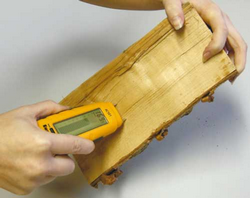 There are the following degrees of wood moisture:
There are the following degrees of wood moisture: